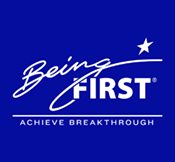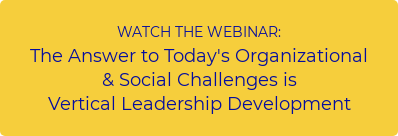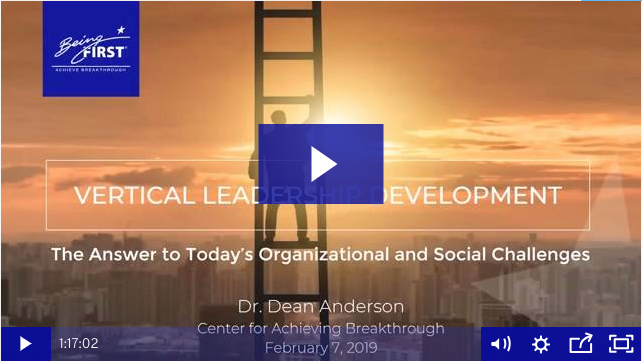What Makes a Good Leader? Going from Unconscious to Conscious Leadership
Achieving organizational breakthrough requires significant transformation, and leading organizational transformation requires certain qualities that make a good leader.
These qualities of a leader are influenced by the level of outcome the leader is seeking. Leaders who seek outcomes not too far out of their organization’s current comfort zone of performance can lead as they always have. But leaders pursuing breakthrough require what we call “conscious leadership qualities.” The bigger the outcome leaders pursue, the larger the challenges they face, and the more their leadership qualities must bring out the best in themselves and others, and enable them to deal with the complexities that the big challenges entail.
Conscious Leadership Requires Introspection and Self-Awareness
First and foremost, the quality that makes a good leader is their ability to introspect, self-reflect, and learn from their experience. This builds self-awareness and mindfulness, and begins to bring online critical leadership “super-powers” that enable them to see paths to success through enormous complexity.
Mindset is causative in every human endeavor. The mindset a leader has – their perspective, worldview, beliefs, assumptions, and values – shapes what they see in their market and organization, how they interpret it, and the subsequent conclusions, decisions, and actions they take. If a leader is not introspective, they cannot see their mindset in action. They are not aware of the inner workings that influence what they see and how they respond. In today’s VUCA (volatile, uncertain, complex, and ambiguous) environment, lack of awareness is extremely problematic because old mindsets often lead to partial perspectives, wrong assumptions, and bad decisions.
Cultivating Self-Leadership
Becoming more conscious through introspection and self-awareness leads to self-leadership, the ability to monitor one’s interior and ask fundamental questions like, “Am I seeing the whole picture?” “Am I interpreting things correctly?” “What other interpretations might be possible and more aligned to what is really happening?” This leader quality is fundamental to achieving organizational breakthrough. We need conscious leaders if we want to solve complex challenges.
As a leader develops greater self-awareness, they cultivate self-leadership in both themselves and others. They catalyze their own self-leadership through their ongoing self-reflection. They cultivate self-leadership in other’s by how they relate to them. Taking a supportive leadership way of being where the leader asks others how they would do things generates self-reflection. This coaching perspective helps others find their own solutions. This promotes self-leadership in them. It also creates a new partnership paradigm for the leader-subordinate relationship in which both are on a self-leadership path that leads to greater learning and personal breakthroughs.
Supportive Leadership: Being a Co-Creator
A key quality of a leader who is going for breakthrough is to adopt a co-creative way of being, working, and relating. Co-creating fundamentally means to “work with.” Where command and control orients to having power over people, co-creating operates from sharing power with people.
Leading co-creatively doesn’t preclude a leader’s responsibility to sometimes take a more command and control style. Co-creative leadership includes the “leader in front” responsibilities that are appropriate at times, but it expands the leader’s repertoire to become more relational in how they lead. This includes relations to people as well as to events and circumstances.
From a people perspective, co-creating embraces the supportive leadership style, where coaching and mentoring others to figure out the best solutions becomes a primary focus. This unleashes better people management skills, as listening and asking the profound questions that catalyze insight in others becomes central to their style.
Co-creative leaders take this same approach to how they relate to complexity and the significant challenges that going for breakthrough triggers. A co-creative leader “listens” to the market and organizational dynamics at play with an open, un-biased mind so they can understand. Because they have developed self-awareness and can better see their mindsets in action, they are often able to see their partial perspectives, and then pause, adjust, and take a more inclusive view of things. They learn and course correct more readily as they proceed on their organization’s transformation path, and deal effectively with emerging dynamics by adjusting promptly. Co-creative leaders are comfortable with the natural, non-linear path of transformation.
Co-creative leaders understand that solutions occur best when they work with others and the complex dynamics they face. With these qualities of a leader – self-awareness, self-leadership, listening, coaching and co-creating – transformation and breakthrough become more possible.




